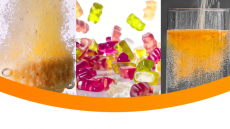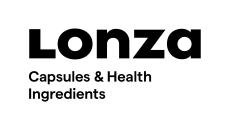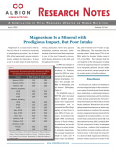Glucosamine price rises set to boost market for quality products
caused major price rises in the joint health ingredient
glucosamine, a shrimp derivative. But if prices stabilise at these
levels, they could make higher quality glucosamine more
competitive, promoting a shift in the way the joint ingredient is
sold in Europe.
Europe already has higher quality requirements for glucosamine than the US for example, partly a result of stricter testing for contaminants like chloramphenicol in seafood. This has restricted access to the glucosamine market largely to one Indian company, Pharmed Medicare.
But US investigations into dumping by the world's main shrimp producers, including those in India, has caused a dramatic shortfall in production of the raw material, sending prices for glucosamine rocketing.
Prices have risen from around $4 per kg six months ago (said to be an artificially low price) to near $20 per kg in recent weeks. Pharmed Medicare said recently that its stocks are down about 30 per cent while costs are up by around 300 per cent.
And this is before the US department of commerce announced its preliminary findings on India's imports.
Yesterday the department released its decision on preliminary margins on shrimp imports from China (ranging from 0.04-112.81 per cent) and Vietnam. These duties will take effect in around one week. Findings are expected at the end of the month for a further four countries, including India. But the industry expects the duties to continue to restrict shrimp fishing and therefore, glucosamine raw materials.
But while the major glucosamine suppliers struggle to maintain supply to their key customers and face diminishing margins, the high quality ingredient produced by some European companies is looking more attractive.
"For us it's not a negative thing," admitted Bjarte Langhelle, marketing director at Icelandic company Primex. "This makes us more competitive. If prices stabilize at a higher level, people can get a higher quality product for the same price as a Chinese one."
Primex, using shrimp residues from the waters around Iceland, claims to supply about 50 per cent of Japan's glucosamine, one of the fastest-growing markets for the ingredient since the government changed the status of glucosamine from drug to food. According to nutraceuticals consultant Paul Yamaguchi, it has tripled in sales since then to $58 million in 2003.
But it has not yet seen demand from Europe for its higher quality product.
Sundeep Aurora, president of India-based Pharmed Medicare, the main supplier of glucosamine to Europe and also one of the few suppliers of drug master file glucosamine, agreed that the shrimp trade dispute could indeed benefit the higher priced products.
At the same time however, supplements in Europe are also set to see growing competition from new pharmaceuticals. Glucosamine has been gaining significant attention from the medical community for evidence of its strong benefits to osteoarthritis patients. And more and more European countries require a drug master file on the product.
"In Norway for example you can't get hold of glucosamine as there hasn't been any drug master file glucosamine available," said Langhelle.
Such requirements have already restricted Europe's glucosamine market (estimated to be a tenth the size of that in the US) and encouraged new producers of a pharmaceutical grade ingredient.
"I'm expecting a few players to offer it as a drug master file version now because it is so well-documented. There is enough evidence to get a drug approval," said Langhelle.
One such company is Norwegian firm Glucomed, which is aiming to produce active pharmaceutical ingredient (API) glucosamine, based on a novel production method.
Sigurd Molstre, quality manager at the firm, noted that a US government-funded trial, GAIT, set to complete at the end of next year, is likely "to prove the efficacy of glucosamine and chondroitin in osteoarthritis" and could have a major influence on its use by the medical community.
This may spell trouble for the nutraceuticals industry, which is seeing global growth in the ingredient of between 10 and 15 per cent. A drug approval could impact sales of food supplements.
However Molstre also noted that some countries can sustain a split market -in Germany, glucosamine is sold both as a supplement and as a drug. Other markets, such as Taiwan, are moving to regulate the ingredient as a food rather than pharmaceutical, following Japan, and allowing for increased sales in coming months.
But in the meantime high glucosamine prices look set to continue. In an interview earlier this month, Aurora told NutraIngredients.com that he expects the situation "to worsen twice as much again", bringing price rises for markets like the UK where glucosamine is sold as a food supplement and possibly even affecting the strong growth in the ingredient.
The shrimp trading dispute could therefore have a significant impact on the future of glucosamine, through its indirect effect on supply of the raw material. After preliminary determinations, to be announced on the remaining producer countries India, Thailand, Ecuador and Brazil on 29 July, final determinations are due at the end of November.
If the department of commerce makes a final affirmative determination in either or both investigations, the US International Trade Commission (ITC) is scheduled to make its final injury determinations in January next year and this could then lead to customs officers collecting cash deposits on imports, with long-term prohibitive effects on shrimp producers from the exporting countries.
This will inevitably force nutraceutical companies to look at new options to meet unwaning demand for the joint health ingredient.











